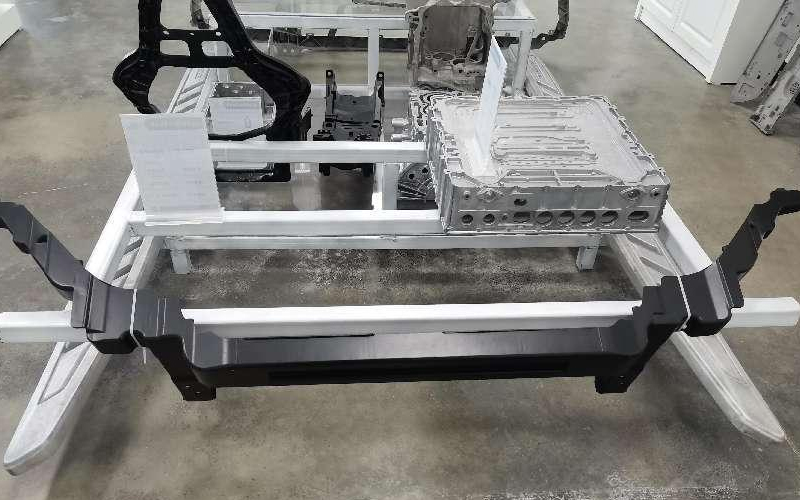Die Casting Design Guidelines: Enhancing Efficiency and Quality
Introduction:
Die casting is a popular manufacturing process used to produce complex metal parts with high precision and excellent surface finish. It involves injecting molten metal into a mold, which is then cooled and solidified to form the desired shape. To ensure the success of the die casting process, it is crucial to follow specific design guidelines that enhance efficiency and quality. This article will discuss some essential guidelines to consider when designing for die casting.
1. Draft angles:
Including appropriate draft angles is essential for easy ejection of the part from the die mold. Draft angles are tapered surfaces that allow the part to be smoothly released from the mold without causing any damage. Typically, a minimum draft angle of 1 to 3 degrees is recommended, depending on the complexity of the part. Insufficient draft angles can result in sticking or dragging of the part, leading to defective castings.
2. Wall thickness:
Maintaining uniform wall thickness is crucial to achieve optimal die casting results. Uneven wall thickness can cause variations in cooling rates, resulting in defects such as porosity and shrinkage. It is advisable to keep the wall thickness between 2 to 5 mm to ensure proper filling and solidification of the molten metal. Additionally, avoiding abrupt changes in wall thickness helps to prevent stress concentration and warping.
3. Fillets and radii:
Sharp corners and edges should be avoided as they can lead to stress concentration, turbulence, and increased chances of defects. Incorporating fillets and radii in the design helps to distribute stress, improve flow, and eliminate potential weak points. Ideally, fillets should have a minimum radius of 1mm, while larger radii are recommended for thicker sections or high-stress areas.
4. Undercuts and parting lines:
Designing parts with undercuts and complex geometries can significantly increase manufacturing costs and make the die casting process challenging. To simplify the process and reduce the likelihood of defects, it is advisable to minimize undercuts and align the parting lines with the mold\’s open/close direction. This allows for easier mold release and reduces the need for additional machining.
5. Ribs and bosses:
Ribs and bosses are commonly used to increase the structural integrity and strength of die cast parts. Rib thickness should be kept around 60-80% of the adjoining wall thickness to avoid sink marks and ensure proper cooling. Bosses, which are used for attaching screws or other components, should have sufficient draft angles to facilitate easy insertion and removal.
6. Gating and venting:
Proper gating and venting are critical for achieving defect-free die castings. Gating refers to the system used to introduce molten metal into the mold cavity, while venting ensures the escape of air and gases during the filling process. The design should include appropriately sized gates and vents to promote smooth flow, minimize turbulence, and prevent the entrapment of air or gases, which can lead to porosity or incomplete filling.
7. Material selection:
Choosing the right material for die casting is essential for ensuring the desired mechanical properties and surface finish of the final part. Aluminum, zinc, and magnesium alloys are commonly used due to their excellent castability and mechanical properties. The material selection should consider factors such as strength requirements, corrosion resistance, thermal conductivity, and cost.
Conclusion:
Designing for die casting requires careful consideration of various factors to enhance efficiency and quality. By implementing the guidelines discussed in this article, manufacturers can minimize defects, reduce production costs, and achieve high-quality castings. Attention to draft angles, wall thickness, fillets, and other design aspects can significantly improve the success rate of the die casting process. Additionally, proper gating, venting, and material selection contribute to the overall efficiency and performance of die cast parts.
-

- Reiðhjól Freehub 12/14/16 tommu barnahjól Low Rider hjól Magnesíum ál barnahjól 3-8 ára Á lager
-

- Magnesíum álfelgur steyptur bílahluti miðstýringarhlíf
-

- Magnesíumblendi tíkómótunaríhlutir
-

- OEM Die casting manufacturer produce magnesium alloy wheel for kids push bike
-

- Thixomolding hjálmur úr steypu úr mangensíumblendi
-

- Magnesíum Ál steypuhlutar Keðjuhlíf fyrir bíla

 0086-750-5616188
0086-750-5616188 +86 13392089688
+86 13392089688 sales@zhongmei-tech.com
sales@zhongmei-tech.com







